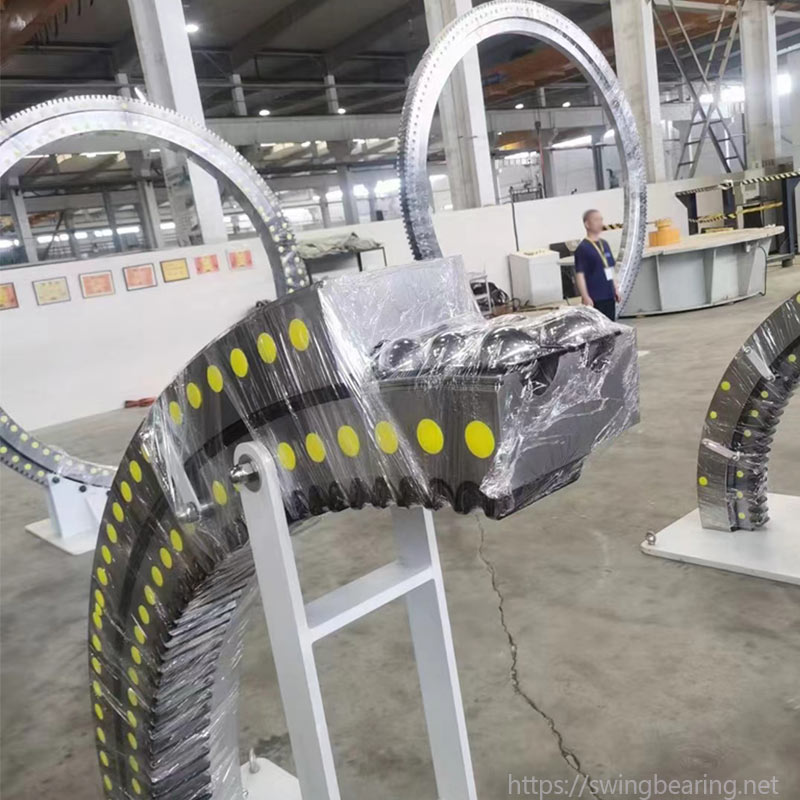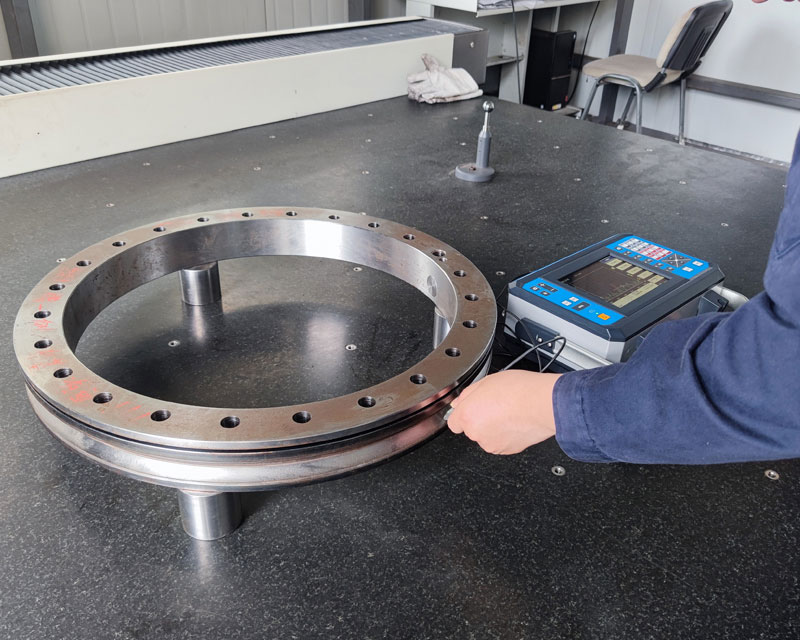
Swing circles, also known as slewing bearings, play a crucial role in the operation of various machines, particularly excavators. They allow the cab to rotate relative to the lower machine frame, facilitating smooth and efficient work operations. However, these components are subject to intense stress, including high-frequency cyclic loading, tilting moments, and considerable inertial, axial, and radial forces. To maximize the useful life of swing circles and prevent issues like seizing and broken teeth, it is essential to adhere to specific guidelines during their design, transport, installation, and maintenance.
Swing circles are essential components in machines where the cab needs to rotate relative to the lower machine frame, such as tracked and wheeled excavators. These bearings endure significant stress and require meticulous care to avoid rapid wear and tear.
Swing circles are large and consist of four main components:
Both the upper and lower rings have grooves, or races, designed to hold the rolling elements and spacers securely. The swing circle’s toothed ring is fitted to the lower machine body with screw connectors, while the upper ring is connected to the cab frame. This arrangement allows the two frames to rotate relative to each other, with a reduction gear system controlling the rotary movement. The reduction gear is fitted to the cab frame and features a transmission pinion aligned with the bearing’s teeth to drive the movement.

The most frequent cause of swing circle replacement is the breakage of one or more teeth on the lower ring. This issue can render the operation impossible as the number of broken teeth tends to increase rapidly. The primary causes of tooth breakage include:
Another common problem is bearing seizing. Despite the high loads to which swing circles are subjected, their relatively small transverse cross-section makes them deformable if not adequately supported. Important factors to consider include:
Failing to address these factors not only risks bearing seizing but also causes permanent damage to the rolling races.
To extend the useful life of swing circles, it is essential to follow best practices from construction through maintenance.

Choosing the right materials and heat treatments is critical for strong, durable swing circles, especially for the teeth’s lifespan. Typically, two types of steel are used:
Surface heat treatment is also necessary for the most heavily loaded areas of the bearing, including the rolling element races and the teeth of the internal ring. Induction hardening increases the resistance of the teeth to bending and pitting on the contact surfaces. Similarly, the rolling races are treated to counter wear from the continuous transit of moving parts.
Proper transport and storage are vital to prevent damage to swing circles. Key considerations include:
Following specific guidelines during installation and maintenance can significantly extend the lifespan of swing circles.
Swing circles are vital components in excavators, enabling smooth and efficient rotation of the cab relative to the lower machine frame. However, they are subject to intense stress, making proper design, transport, installation, and maintenance crucial for their longevity. By following best practices and addressing common issues such as tooth breakage and bearing seizing, operators can significantly extend the lifespan of swing circles, ensuring reliable and efficient operation of their machinery.
Q: How often should I inspect my swing circle?
A: Regular inspections should be conducted every 250 hours of operation, with more detailed inspections every 1,000 hours. This helps identify and address issues early, preventing major failures.
Q: What type of grease should I use for lubricating swing circles?
A: Use the manufacturer-recommended grease and lubricants specifically designed for heavy-duty machinery to ensure optimal performance and longevity.
Q: What are the signs of a failing swing circle?
A: Common signs include unusual noises, difficulty in rotation, visible wear or damage to the teeth, and fluid leakage. Early detection and repair can prevent major failures.
Q: How can I prevent tooth breakage in swing circles?
A: Ensure the drive gear braking system is effective and routinely inspected. Avoid overloading the shovel and high-speed rotations to minimize the risk of tooth breakage.
Q: Why is surface heat treatment important for swing circles?
A: Surface heat treatment, such as induction hardening, increases the resistance of the teeth and rolling races to bending, pitting, and wear, significantly enhancing the durability of swing circles.